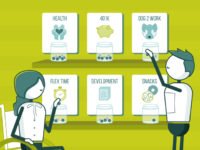Barbara Porter is Managing Director at EY and leads the Americas Customer Service Practice. She brings over 25 years of customer operations experience in the energy industry as an entrepreneur and corporate executive. Here, she discusses how service organizations can enhance the experience of employees and their customers.
What are Top Customer Service Strategic Priorities in 2023?
Cross-industry we are seeing 4 common strategic priorities: Equip, Enable, Enhance and Engage
How do service organizations equip their people with the knowledge and skills needed to deliver the defined customer experience? This may include upskilling and training for existing employees as well as strategic technology investments in AI that augments the agent experience – such as Auto Summary, Auto compose, etc Service leaders are making investments to ensure agents have a holistic view of the customer’s journey at their fingertips to address, resolve and retain customers.
Enable the service organization through easier access to data and insights. Data is one of the most underutilized assets in many organizations, especially in customer service. This is all about making more informed business decisions, real-time, to impact key operational outcomes such as FCR and Effort
Enhance the customer experience through investments in technology that make it easier to self-serve and interact with companies. This may include upgrades to Visual IVR capabilities, leveraging AI to enhance Knowledge Management, or to gain a deeper understanding of customer trends and needs
Engage People:
Above everything are the intentional efforts of service organizations to create an environment where people feel connected to each other, their organization, and understand the impact their work has toward reaching the organization goals.
With most service organizations in a hybrid environment, service leaders are engaging with digital platforms and tools to build the community, culture and connections.
What are some of the biggest challenges with remote work?
In customer service organizations, one of the biggest challenges is for supervisors. It’s very different to connect remotely vs. being able to stop by for an informal conversation – you miss the visual cues if someone needs additional help or if someone is having a good or challenging day. It makes it harder to build relationships. How do you build community and feel part of an organization if you haven’t met them?
This requires new skills and technology that integrates with the channels we already use everyday like Microsoft Teams. It requires being intentional about and investing time in connecting with others in ways that show you care about them as people (not just the work they are doing).
Related: The Biggest Challenge of Remote Employee Engagement
What are organizations doing to address these challenges?
Being intentional about in-person experiences however frequently they occur. This means scheduling meetings or times when an entire team or multiple teams come in and ensuring there is “mixed use” of the time for work and non-work interactions. For organizations offering a lot of flexibility with team members coming in different days, intentionality here is even more important.
On the technology side, having solutions like Bonfyre that are fully integrated with the tools like Microsoft Teams that team members already use and are familiar with is very important.
What remote work policies are you seeing?
We are still learning and don’t know the long-term impact for people or businesses with remote work. I’m seeing everything from completely remote to being required to come in 3 days a week. Hybrid model is what I’m seeing with my clients most often.
Do you think work will be more remote or less in the next 12 months?
Contact centers have really had a challenge with retention, recruitment, etc. and having the flexibility of being able to work from home is critical.
You’re going to see more and more work from home. Contact centers are fairly well equipped for this transition because they already have enabling technology to measure and manage performance, quality, and more.
What’s different about Employee Experience in 2023?
Wellness is top of mind whether you are an employee or an employer. And what does wellness mean? For some it’s about work/life balance and mindfulness and managing stress. EX is no longer just about your experience “when I am at work”. It’s a more holistic view of your life – the boundaries have eroded a lot.
How does remote work impact those who cannot work remotely?
You know the requirements of a role when you accept that rolet. That said, being sensitive to this dynamic and exploring ways to create more equity around remote work for those who are ineligible is critical.
What are you seeing with Engagement surveys and action planning?
Most of my clients do an annual engagement survey with pulse follow-ups whether quarterly or sometimes monthly. There is a feeling of survey burnout, so what are other ways you can collect that information to support or reinforce the annual or bi-annual survey? Focus groups and ensuring pulse surveys are tightly focused on a few high-priority questions are ways to mitigate survey fatigue.
Post-survey action planning is inconsistent and highly fragmented when you get to where it matters most – frontline leaders.
Yes there is an action plan that typically comes out but tends to lose steam as it is implemented and cascaded throughout an organization. Loss of momentum can be for many reasons but most often in my experience it’s the time required on top of everything else supervisors have on their plates.
Related: How to Make Better Employee Pulse Surveys | Bonfyres
How are clients leveraging AI in customer service?
We are seeing AI being implemented in 3 ways across service organizations:
- To augment the agent and improve productivity
- To automate/digitize the right interactions
- To unlock insights across customer, employee and operational data



 6 min
6 min




